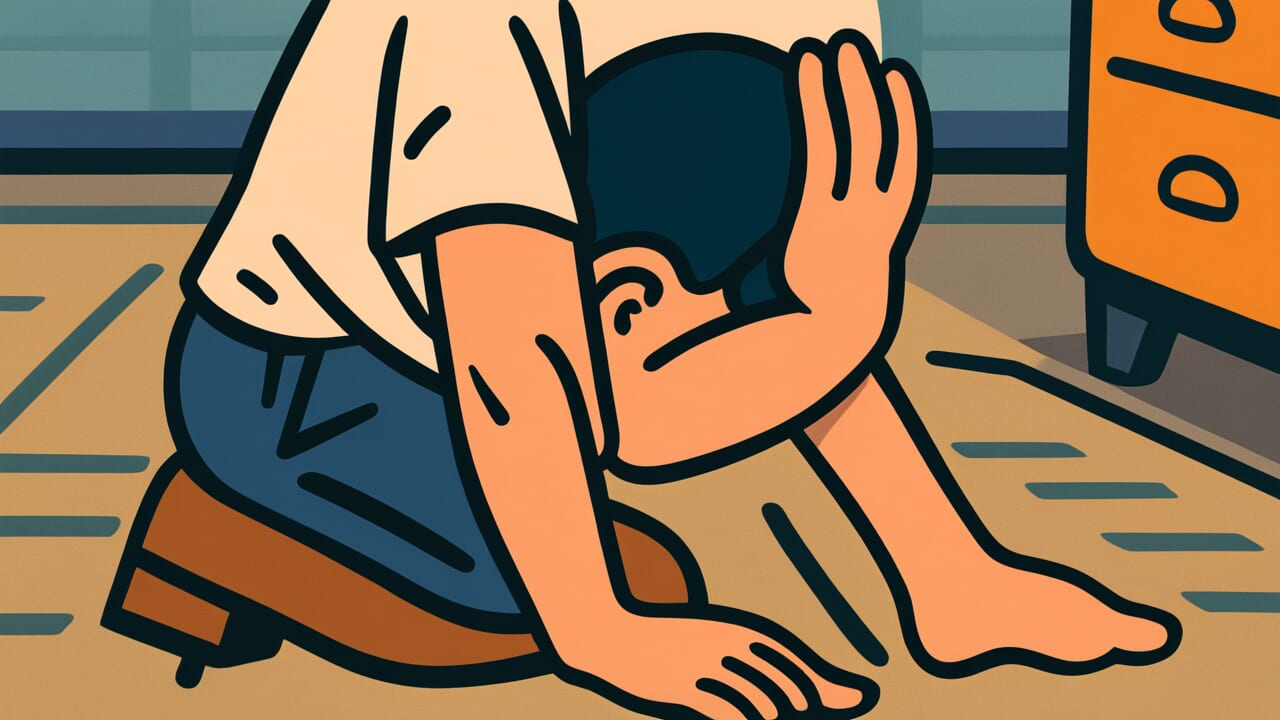How to Read “Suffering from a headache in the heel”
Kubisu de zutsū wo yamu
Meaning of “Suffering from a headache in the heel”
“Suffering from a headache in the heel” describes using completely wrong methods to solve a problem. It’s like trying to cure a headache by doing something with your heel.
Obviously, if your head hurts, doing something with your heel won’t help. This physical impossibility perfectly shows how foolish misguided solutions are.
This proverb applies when people misunderstand a problem’s true nature. They waste time and effort on ineffective methods.
For example, a company’s sales drop because of poor product quality. But they only increase advertising spending. Or someone has relationship problems but tries to solve them by buying things.
Even in modern society, many people only address surface issues. They avoid facing root causes.
This proverb teaches an important lesson. Problem-solving requires choosing the right approach. Misguided efforts end in waste.
Origin and Etymology
The exact source of this proverb is unclear. However, the word structure offers interesting insights.
The “heel” is the lowest part of the foot. “Headache” is pain in the head, the highest part of the body. This contrast forms the core of the proverb.
In the human body, no two parts are farther apart than the head and heel. A headache is a problem in the upper body. Trying to treat it with the heel, in the lower body, is absurd.
This physical distance vividly expresses how ridiculous misguided solutions are.
Since ancient times, Japanese culture has held that each body part has its own role. The head governs thinking and judgment. The feet handle movement and support.
Each part has its proper function. Disrupting this order was considered unnatural.
This proverb likely emerged from teachings about choosing appropriate methods for problem-solving. In times when medicine was undeveloped, wrong treatments could be fatal.
From such serious experiences, people learned the importance of correct solutions. They expressed this wisdom through the familiar example of body parts.
Usage Examples
- His English is weak, but he just keeps buying reference books. It’s like suffering from a headache in the heel.
- The company’s poor performance comes from management problems. Trying to fix it by redecorating the office is like suffering from a headache in the heel.
Universal Wisdom
“Suffering from a headache in the heel” reveals a deep human tendency. People often look away from real problems. Instead, they tackle easier, unrelated things.
Why do people choose wrong methods? Because facing true problems often hurts. Real solutions require admitting faults, accepting big changes, or making difficult decisions.
Meanwhile, misguided approaches give a false sense of security. They let people feel like they’re “doing something.” Nothing actually gets solved, but people can justify their actions.
This human weakness transcends time. Ancient people and modern people alike feel tempted to avoid core issues. They escape into surface-level fixes.
Our ancestors understood this universal human nature. They used body parts as a metaphor everyone could grasp. This was their warning bell.
This proverb has endured because it strikes at human nature. We need courage to identify a problem’s core. We need wisdom to choose the right approach.
These two qualities remain essential for navigating life in any era.
When AI Hears This
The human body is a complex system with about 200 bones and over 600 muscles working together. When your heel hurts, you unconsciously shift your weight while walking.
This changes your knee angle, tilts your pelvis, alters your spine’s curve, and finally tenses your neck muscles. This causes a headache.
This chain reaction is called “kinetic chain” in orthopedics. What’s remarkable is that the heel and head are about 150 centimeters apart, yet the effect travels that distance.
In systems engineering, this is called “cascade failure.” In the 2021 Suez Canal incident, just one ship turned sideways. This stopped 12 percent of global trade.
A small abnormality at a seemingly unrelated endpoint can cripple an entire system. The human body works the same way.
The feet make up only 2 percent of body weight. Yet they can affect central functions like blood flow to the brain and nerve transmission.
Even more interesting is how the human brain tends to misidentify pain sources. When your head hurts, you assume it’s a brain problem. You ignore the real cause in your heel.
In system failure analysis, the farther apart the symptom and root cause are, the longer it takes to fix. This proverb captures modern complexity theory perfectly.
It tells us to look for the “starting point of the chain,” not just “where symptoms appear.”
Lessons for Today
This proverb teaches modern people an important distinction. “Being busy” and “doing the right thing” are not the same.
We feel reassured when we see ourselves working on something. But if that effort misses the mark, we just waste time and energy.
Modern society overflows with information. Various solutions are constantly offered. What matters is identifying the true nature of your problem.
Don’t be fooled by surface symptoms. Take time to calmly consider what the root cause is.
This proverb also teaches the courage to tackle “what needs to be done,” not just “what’s easy to do.” Truly effective solutions are often difficult and require bravery.
But only by taking that step can real change happen.
Are you choosing truly effective methods for the problems you face now? Take time to stop and think.
That’s the first step toward freeing yourself from wasted effort. That’s how you move toward real solutions.



Comments